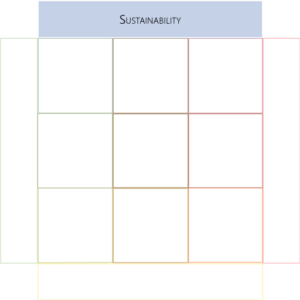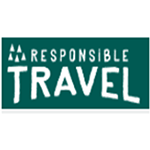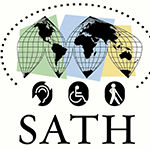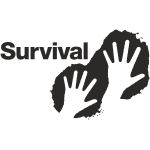
Traveler: 15 Questions for Revealing Who They Are and Their Needs

TOURISTS
All consumers and travelers are different!
Finding - Mass Market Niche Market Segment Diversification Ideal Persona Traveler
Key to Success
In this section, we would like to make sure that Small and Medium-sized Tourism Enterprises (SMTEs)
should be aware of the following:
- Our best travelers’ common characteristics and learn about their travel motivations, such as adventure, relaxation, cultural experiences, personal growth, and more.
- Learning about travelers’ preferences and behaviors, such as their preferred travel style, accommodation type, and activities, is critical.
- Travelers’ impact on destinations and local communities includes understanding how their travel choices and behaviors can have economic, social, and environmental implications.
Accomplishments
In this step, we’ll:
- Identify target niches extensive enough to provide a solid tourist base.
- Consider the critical success factors for each tourist segment and the differences between tourist segments.
- Highlight ways to reach our tourists, convert them into tourists, and profitably satisfy their needs.
Time-Saving Tools
We’ll complete all sections of this chapter more quickly if we have any of the following handy:
- The tourism destination market plan and strategic plan.
- The sustainable development plan of the tourism destination.
- Our business plan, our business objectives, and our strategic business plan.
- The tourism destination laws are driving tourism.
- The tourism destination inventory and other research.
- The trade tourists and other relevant stakeholders.
- Tourism destination demand research and an analysis of the tourists demand profile.
- Research the potential customers who live in the tourism destination.
- Research the potential customers who live 3 hours away from the tourism destination.
- 2030 Agenda for Sustainable Development
- Sustainable Development Goals (SDGs).
- Sustainable Development Goals strategies (SDG).
- Some sustainable development plan or guide aligned with SDGs.
- Research about the tourism industry.
- Another specific analysis applied to our case.
- All documents could find relevant information.
Traveler / Tourists
Presentation
Small and Medium-sized Tourism Enterprises (SMTEs) need to understand tourists’ changing safety and economic concerns, as well as their future travel intentions and current travel spending. Tourism enterprises should also be aware of the shift in consumers’ motivations for travel, rather than local travel, and their online travel shopping behavior. In addition, we should understand recent changes in travel expectations, attitudes, and behaviors and the sustainability of these changes.
Recognizing that a tourism enterprise operates within a given destination is essential. With this understanding, we can distinguish three large groups of initial consumers: tourists, excursionists, and the local community.
From there, it is crucial to segment the market to understand its consumers’ similarities better. These groups of people have the same goals and pains and thus outline more efficient marketing strategies targeting niches extensive enough to provide a solid tourist base.
In conclusion, SMTEs can tailor their products and services to meet tourists’ needs and expectations by knowing their motivations, preferences, and values. This, in turn, can enhance the travelers’ experiences, increase their satisfaction and loyalty, and ultimately drive the business’s success. Moreover, by catering to responsible travelers who prioritize sustainability and social responsibility, SMTEs can contribute to the destination’s sustainable development while creating positive social and environmental impacts.
GUIDING QUESTIONS
How can we promote responsible and sustainable practices throughout our travelers? Implementing eco-friendly initiatives and supporting local communities will contribute to small tourism enterprises' long-term success and reputation through our travelers.
YScala
A suggestion of guiding questions that are not intended to exhaust the topic:
- What kind of tourists do we want?
- What tourists and travelers segments do we mainly serve? Who are our most important travelers?
- Who is the recipient traveler of our value-adding services?
- What traveler needs are expressed in travel occasions that will be the business’s core? What are the travelers’ pains that we are relieving?
- Who are the main types of travelers to the destination, and what are their motivations for traveling here? How can our business tailor its products and services to meet its needs and preferences?
- What can we offer that responds to what the travelers want to experience? Whom are we supporting to achieve their objectives?
- What are their reasons for traveling? How can the experience be personalized?
- What is the range of time and budget that our client spends at our destination? How does the traveler’s level of spending and budget impact our business revenue and profitability?
- Who are our ideal travelers, and how do they make buying decisions?
- Are the markets from which our business aims travelers to draw increasing or declining?
- Are there potential traveler habits changes that might increase or reduce sales?
- What other traveler segments could we serve with what we have? What different traveler needs could we do with what we have?
- Which travelers would we be better off without? Conversely, what traveler needs should we stop serving?
- What trends and trigger events cause our travelers to search for solutions?
- Who are our most valuable – and most costly – travelers?
Ideal traveler persona
Here are a few GUIDING QUESTIONS to help us create the ideal traveler persona. However, they are not intended to exhaust the topic:
- Who are our most dedicated clients of ours?
- What is the traveler profile of our travelers?
- Where do they originate from?
- Where are they coming from (continuing travel)?
- What is the geographic area from which travelers will originate?
- When do they prefer to travel? How do they prefer to travel?
- What types of people and places do they enjoy connecting with? Who is traveling with them?
- What kind of cuisine do they appreciate?
- What stories do our guests share with others about their time with us?
- What do they blog about?
- What do they post to Trip Advisor or WeTube?
- What are they taking pictures of while they are with us?
- Which people and places are they connecting with?
- How can the experience be personalized?
- Who influences our travelers (opinion leaders, stakeholders, users)?
Small and Medium-sized Tourism Enterprises (SMTEs) can build strong awareness about their market target by asking these questions and working through the answers to identify new travelers’ niches.
Offering more information
Besides the 15 guiding questions we’ve provided to help us evaluate and improve our tourism destination, we’ve compiled a list of valuable resources to further our knowledge and understanding of destination management. Notably, these resources offer insights into best practices, sustainability, marketing, and more, catering to the needs of tourism professionals and stakeholders. Consequently, by exploring these links, you’ll be better equipped to make informed decisions and create a thriving, competitive, and sustainable destination for travelers from around the world.
1. Lonely Planet – This website provides travel guides, advice, and inspiration for travelers all around the world. Linking to this site could provide readers with additional resources and ideas for their own travel planning.
2. National Geographic Travel – National Geographic has long been associated with travel and exploration, and their travel website offers articles, guides, and stunning photography to inspire and inform travelers.
3. UNESCO World Heritage Centre – If your post focuses on historical or cultural tourism, linking to the UNESCO World Heritage Centre could provide readers with information about specific sites and landmarks that are designated as World Heritage sites.
4. Sustainable Travel International – For readers who are interested in responsible tourism and minimizing their impact on the environment and local communities, Sustainable Travel International provides resources and information about sustainable travel practices.
Table of Contents
Let your like and recommend this post to improve your audience!
Share this post with friends, colleagues, or anyone else who might be interested.
Comments:
We invite you to engage with our community, share your perspectives, and contribute to this meaningful conversation by commenting below. Your experiences and ideas can help others in their sustainable tourism development management journey.










